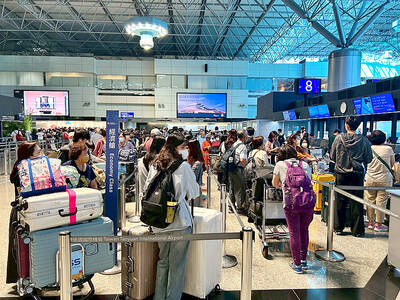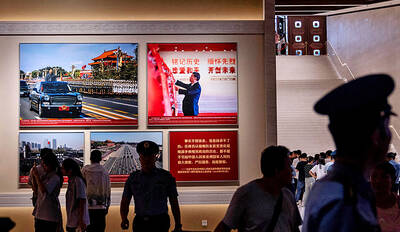The military’s maintenance expenditure on its fleet of 30 Boeing AH-64E Apache helicopters has grown to a staggering US$30 million and could continue to rise, the Ministry of National Defense (MND) said on Wednesday.
The ministry obtained the fleet, along with munitions, training and equipment — mainly helmets with heads-up displays — for NT$59 billion (US$1.92 million at the current exchange rate) in 2007.
After subtracting munitions and training costs, the overhead per helicopter stands at NT$790 million, a source said, adding that the military’s maintenance fees could be used to purchase one more helicopter for the army.
The last of the AH-64E Apache helicopters were delivered in October 2014, but one of the helicopters was destroyed in a crash in April 2014 during a training flight in Taoyuan.
The ministry said that compared with the maintenance fees for fiscal year 2018, which were NT$320 million, maintenance fees for fiscal year 2019 have nearly tripled.
The ministry would have to foot the maintenance bill because, as of 2015, the fleet is no longer under warranty, it said.
As the AH-64E is the most recent variant of the helicopter family, the US has yet to approve full-scale localized maintenance and repairs for Taiwan, necessitating shipment of parts back to the US, the ministry said.
The ministry said it would continue to petition the US to establish in Taiwan — or authorize Taiwan to establish — an Apache maintenance and repair center similar to the agreement Boeing has with the Saudi Arabia.
Boeing in March signed a memorandum of understanding with Saudi Arabian Military Industries to base at least 55 percent of the region’s maintenance and repair work for Saudi Arabia.

Three batches of banana sauce imported from the Philippines were intercepted at the border after they were found to contain the banned industrial dye Orange G, the Food and Drug Administration (FDA) said yesterday. From today through Sept. 2 next year, all seasoning sauces from the Philippines are to be subject to the FDA’s strictest border inspection, meaning 100 percent testing for illegal dyes before entry is allowed, it said in a statement. Orange G is an industrial coloring agent that is not permitted for food use in Taiwan or internationally, said Cheng Wei-chih (鄭維智), head of the FDA’s Northern Center for

The Chinese military has built landing bridge ships designed to expand its amphibious options for a potential assault on Taiwan, but their combat effectiveness is limited due to their high vulnerability, a defense expert said in an analysis published on Monday. Shen Ming-shih (沈明室), a research fellow at the Institute for National Defense and Security Research, said that the deployment of such vessels as part of the Chinese People’s Liberation Army (PLA) Navy’s East Sea Fleet signals a strong focus on Taiwan. However, the ships are highly vulnerable to precision strikes, which means they could be destroyed before they achieve their intended

About 4.2 million tourist arrivals were recorded in the first half of this year, a 10 percent increase from the same period last year, the Tourism Administration said yesterday. The growth continues to be consistent, with the fourth quarter of this year expected to be the peak in Taiwan, the agency said, adding that it plans to promote Taiwan overseas via partnerships and major events. From January to June, 9.14 million international departures were recorded from Taiwan, an 11 percent increase from the same period last year, with 3.3 million headed for Japan, 1.52 million for China and 832,962 to South Korea,

REWRITING HISTORY: China has been advocating a ‘correct’ interpretation of the victory over Japan that brings the CCP’s contributions to the forefront, an expert said An elderly Chinese war veteran’s shin still bears the mark of a bullet wound he sustained when fighting the Japanese as a teenager, a year before the end of World War II. Eighty years on, Li Jinshui’s scar remains as testimony to the bravery of Chinese troops in a conflict that killed millions of their people. However, the story behind China’s overthrow of the brutal Japanese occupation is deeply contested. Historians broadly agree that credit for victory lies primarily with the Chinese Nationalist Party (KMT)-led Republic of China (ROC) Army. Its leader, Chiang Kai-shek (蔣介石), fled to Taiwan in 1949 after losing a